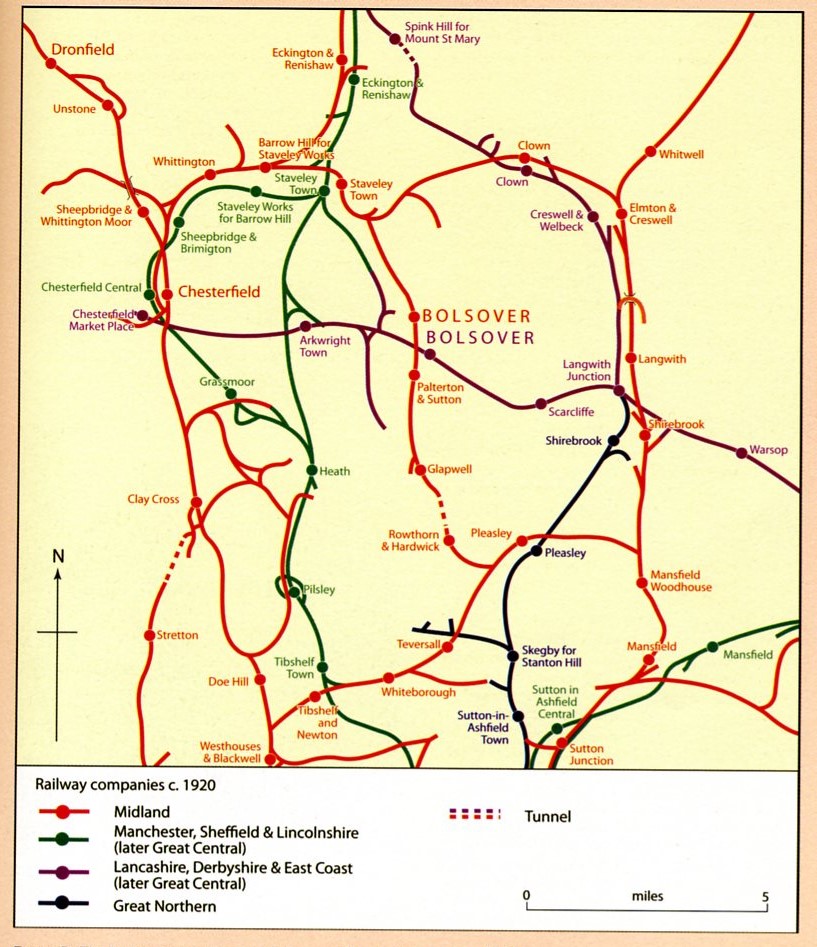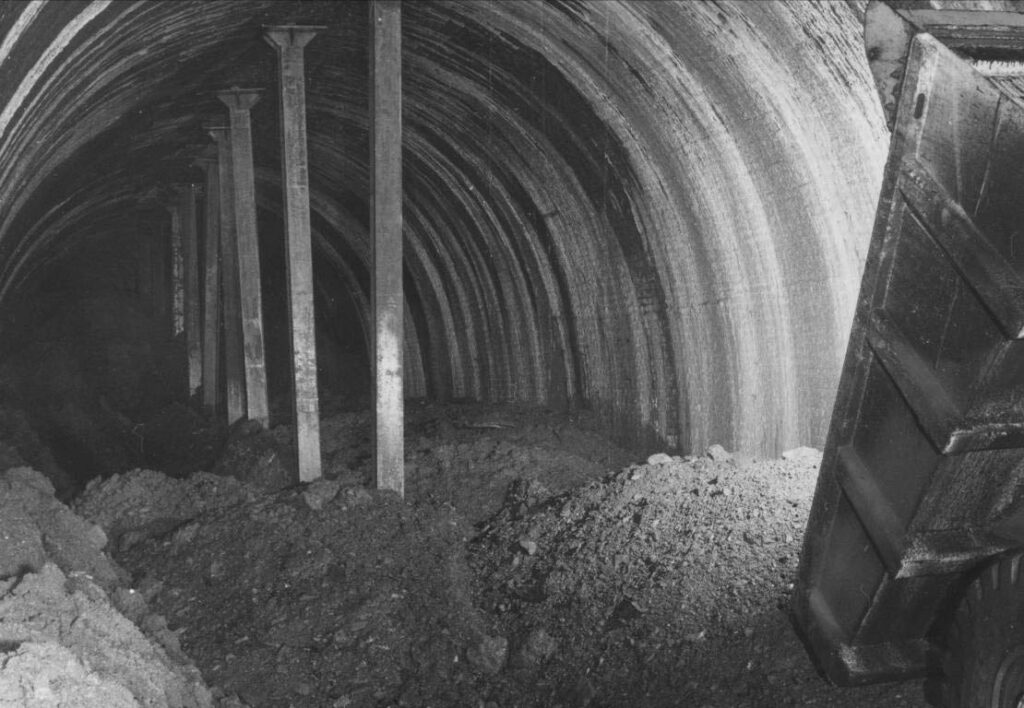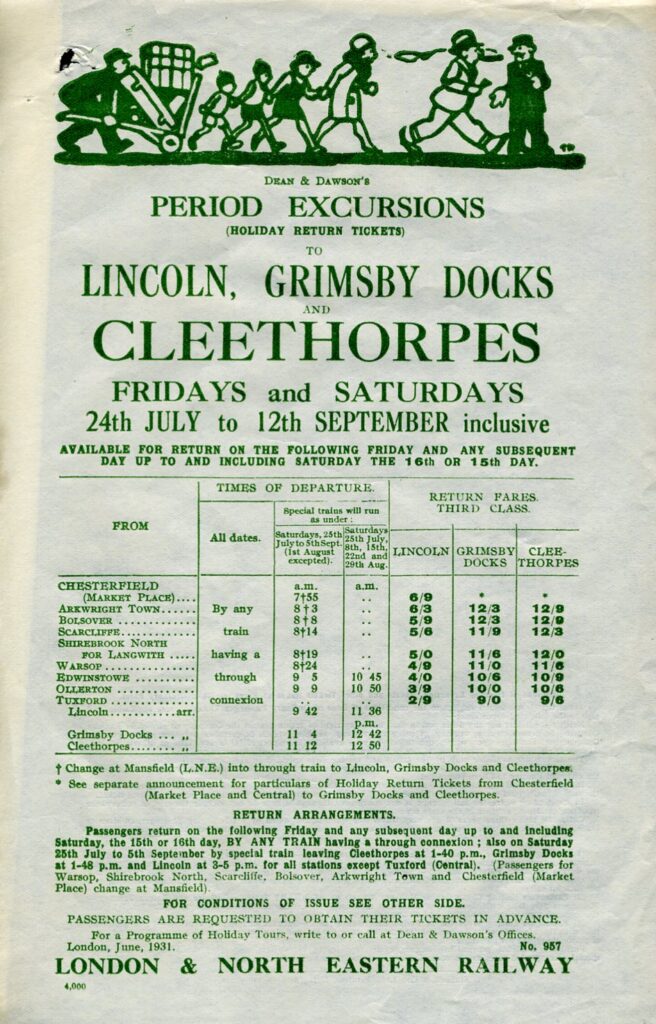North Derbyshire’s Coalfield Railways – a short summary
In this post we take a short overview of railways in the north Derbyshire coalfields area. It was originally published on our now defunct England’s Past For Everyone website.
Early history
The earliest scheme for a modern, locomotive operated railway in the north Derbyshire coalfield, proposed in 1832, was for a line running down the Erewash valley in the north-east of the county, to compete with canals linking the coalfield with Nottingham, Derby and the Trent. This was not built for some years but the wave of railway promotion in the mid-1830s included a line which ran north from Derby through the Derwent and Amber valleys, before tunnelling beneath the watershed to enter the Rother valley south of Chesterfield. From there it continued to Rotherham and Leeds. As soon as this North Midland Railway opened in 1840, branches were built to nearby pits. The modern history of mining in Clay Cross and neighbouring villages began.

The Midland Railway
The Midland Railway was formed in 1844 by the amalgamation of the North Midland Railway, Midland Counties Railway and the Birmingham and Derby Junction Railway. The Midland retained the advantage gained by being the first to serve the Derbyshire coalfield. A second line through the southern half of the coalfield, from Clay Cross through Alfreton and the Erewash valley (to join the Derby-Nottingham line at what became Trent junction), was opened in 1862, to which colliery branches were soon added. In the early 1870s, when interest grew in exploiting the deeper coal seems beneath the magnesian limestone to the east of Chesterfield, the company built a line between Mansfield and the Manchester, Sheffield and Lincolnshire Railway (MSLR) at Worksop. It was this line that enabled the Sheepbridge Company to open their colliery at Langwith. Without the prospect of collieries being sunk it was uneconomic for a railway company to consider a new line; without a railway it was impossible to open a colliery.
The Midland continued to build branches as mining east of Chesterfield expanded. A line from Staveley up the Doe Lea valley to Glapwell was later extended to join another Midland branch built from Westhouses (near Alfreton) through Pleasley to Mansfield. A second line from Staveley ran via Clowne to the Mansfield-Worksop branch at Creswell. Although these lines had passenger services they existed mainly to carry coal. In some cases they also took miners to and from collieries where the men did not live locally.
From the 1923 ‘railway grouping’ the MR became part of the London, Midland and Scottish Railway.
In the 1890s three other companies tried to secure a share of the local coal trade, encouraged by colliery owners who disliked being dependant on a single carrier.
The Manchester, Sheffield and Lincolnshire Railway (MSLR)
The MSLR, as part of their scheme to build a new trunk route from south Yorkshire to London, opened a line between Beighton and Annesley. This ran parallel with the Midland as far as Staveley and then passed to the east of Chesterfield (which was served by what quickly became a loop from the main line) through Heath and Tibshelf to the Leen Valley, north of Annesley. Branches were put in to each colliery on the line, most of which were already served by the Midland.
The Lancashire, Derbyshire and East Coast Railway
The other scheme of the 1890s was the independent Lancashire, Derbyshire and East Coast Railway (LDECR). This was promoted largely by E.M. Bainbridge, the founder of the Bolsover Colliery Company. This line was intended to link the Derbyshire and Nottinghamshire coalfield with new docks on both the east and west coasts. In the event, the company built a line from Chesterfield to near Lincoln which provided an outlet for coal from the Bolsover area (and later the Dukeries coalfield) to the east coast ports in competition with the Great Central (as the MSLR was renamed after the opening of its line to Marylebone). The LDECR was unable to survive as in independent concern. In 1907 it was absorbed into the Great Central – from the 1923 ‘railway grouping’ part of the London and North Eastern Railway (LNER).

There’s more about who we think designed the imposing Chesterfield Market Place Station buildings and other station buildings of the LDECR here.
The Great Northern Railway
The third company to penetrate the coalfield was the Great Northern, whose Leen valley line was extended in the late 1890s through Pleasley to Langwith Junction.
By 1914, therefore, both the older Derbyshire coalfield and the newer mining district on the magnesium limestone were served by a dense network of branches, mostly built by the two major railway companies of Britain, the Midland and the Great Central. At the grouping of railway companies in 1923 these became principal constituents of the London, Midland and Scottish Railway and the London and North Eastern Railway (LNER) respectively. The Great Northern became a constituent of the LNER in 1923.
British Railways era
With some renationalisation, these company lines continued to serve the north Derbyshire coalfield for the reminder of its life, even after nationalisation in 1948 as a unified British Railways. Just as lines had been built to enable collieries to be sunk in the late 19th century, so the branches were abandoned from the 1960s as the pits closed. By then most passenger stations had long gone, early victims of the more flexible bus services introduced from 1920 onwards, while the small stations on the main lines also closed in the 1960s.
So too did the depots built to house locomotives that were used to carry coal from the pits to sidings on the main lines, where larger trains, hauled by some of the most powerful steam locomotives used in Britain, were made up every night to take coal to the power stations of the Trent valley or to the domestic markets of London and the Home Counties. Just as the end of mining in Derbyshire brought with it the end of a distinctive way of life for many communities, so (on a smaller scale) did the disappearance for the railway from places like Westhouses or Langwith Junction.
Forty years on some of these lines have been converted into footpaths (notably the Five Pits’ Trail around Tibshelf and North Wingfield) while others have disappeared as completely as the collieries they served.

and Langwith Junction were discontinued early in December 1951 after maintenance became unsustainable. An attempt was made to infill it with colliery waste, as shown in this photograph, which appeared in Aveling-Barford News of April 1967. Note the centre supports. Thus illustration via the late Derek Grindell – who wrote and article on the LEDC and the filling-in of this tunnel which you can download below.
The demise of Bolsover Tunnel
Download the late Derek Grindell’s article on an attempt to fill in the LDECR’s Bolsover Tunnel by clicking on the button below.
Select list of the area’s railways station’s opening and closing dates
BOLSOVER (Great Central)
Opened: 8 March 1897 by the Lancashire, Derbyshire and East Coast Railway Company. Renamed BOLSOVER SOUTH by British Railways in 1950. Closed: 3 December 1951
BOLSOVER (Midland)
Opened: 1 September 1890. Closed: 28 July 1930. Reopened and renamed BOLSOVER CASTLE by British Rail 28 July 1977, used occasionally for excursion traffic. Closed: 1981

PALTERTON AND SUTTON (Midland)
Opened: 1 September 1890. Closed: 28 July 1930. GLAPWELL (Midland). Opened: 22 August 1892. Closed: 28 July 1930.
ROWTHORNE AND HARDWICK (Midland)
Opened: 1 September 1890. Closed: 28 July 1930.
SCARCLIFFE (Great Central)
Opened: 3 January 1898 by the Lancashire, Derbyshire and East Coast Railway Company. Closed: 3 December 1951
For further information see Butt, R.V.J. The Directory of Railway Stations (Sparkford, 1995).

There’s more about railway stations in Chesterfield borough in our blog here.
Sources used in this account (except that in the last section) are fully referenced in our Derbyshire VCH Volume III Bolsover and Adjacent Parishes.
North Derbyshire’s Coalfield Railways – a short summary Read More »
